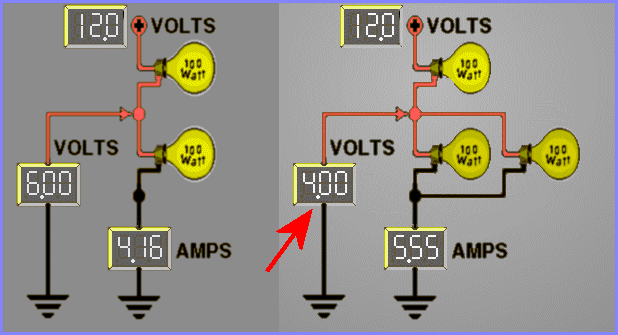Many people think of light bulbs as resistors or behaves as one, which bulbs mostly do. Everything is fine with the Ohm's law regarding current and resistance when the bulb is fully lit.
A lot of people knows the bulb filament resistance changes when it starts up from zero current until it is at full rated voltage. In effect, the light bulb is a non-linear device.
The common mistake that most people made in calculating voltage across multiple connected bulbs is to assume they have the rated resistance even when they are not operated at their rated voltage. Unfortunately, even an engineer falls for this trap. He has my full sympathy because I am an engineer too.
The left part of the image shows two bulbs in series and the mid point voltage is as stated, 6.0V. However, what you will measure in the right hand part of the circuit is not 4.0V but only 1 or 2V depending on the bulbs you have used. Obviously the current is not correct too. It is difficult to accept this idea so if you are in doubt, wire up the circuit and check the result yourself.
The following interesting question is taken from a book: 200 Puzzling Physics Problems by Peter Gnadig, Gyula Honyek & Ken Riley Problem#22
Two non-physic students A & B living in adjacent rooms decide to save money on electricity by wiring their ceiling lights in series. They agreed each would use a 100W bulb and pay half the lighting bill. However, both want to cheat to get more lights without paying extra money. Secretly student A changes his to a 200W light bulb while student B changes his to a 50W bulb. Now, the question is, who failed the final end-of-term examination?

![]() Click here to reveal the answer. Or you can scroll down the page to see it.
Click here to reveal the answer. Or you can scroll down the page to see it.